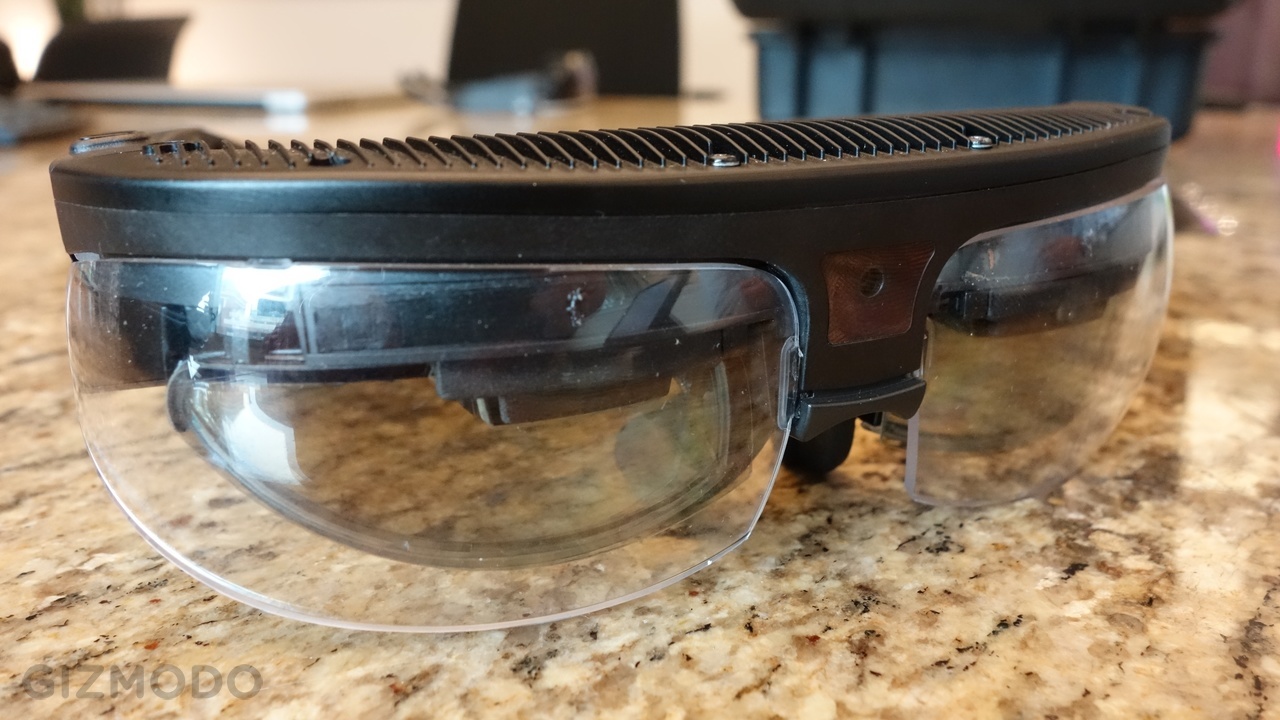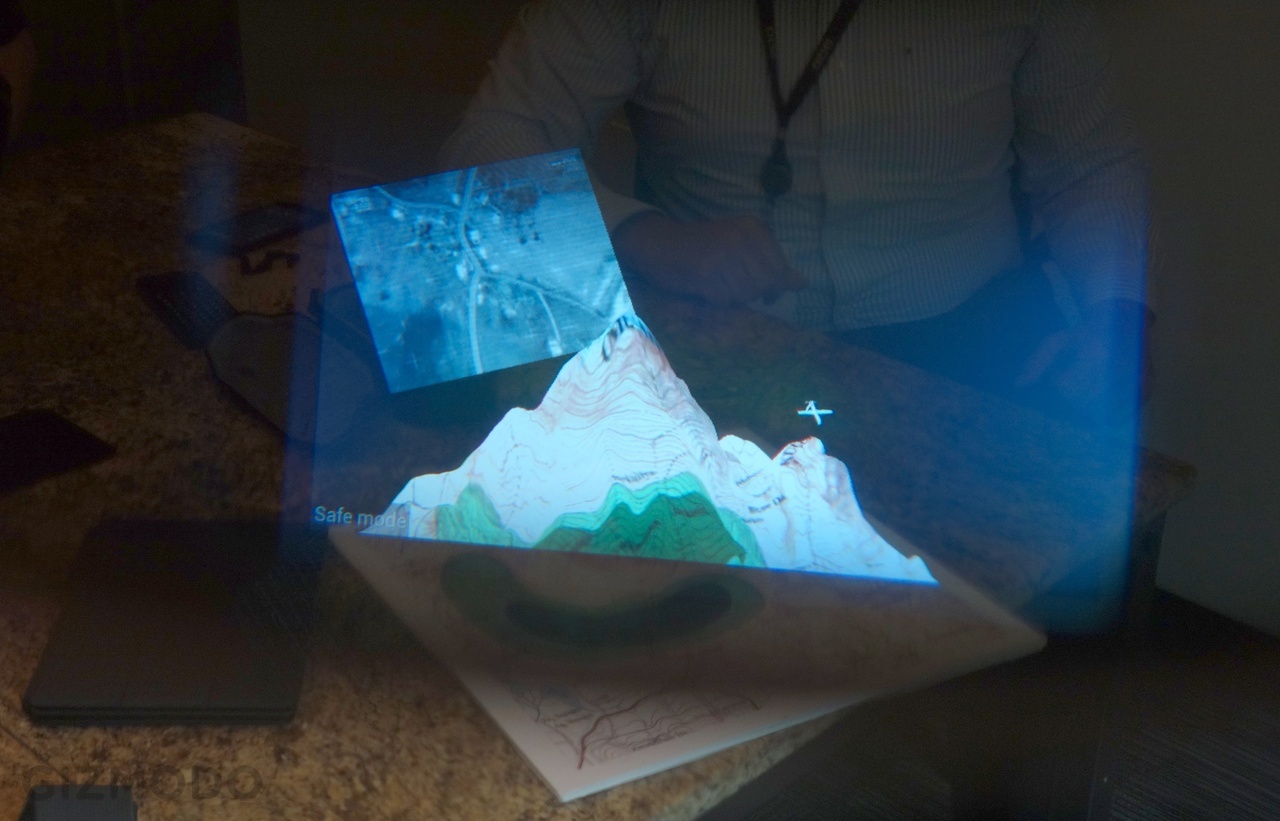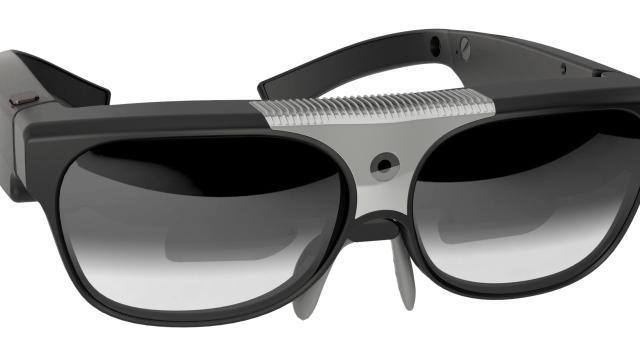Ever heard of Ralph Osterhout? He’s known as the real-life “Q”. He created underwater vehicles featured in two James Bond movies. He’s the guy who shrunk down night vision goggles to a size soldiers could afford to wear. He invented some of the most popular toys of the ’90s, including the Yak Bak, the TalkBoy F/X+ and the gadget-filled Power Penz. And now, his Osterhout Design Group is back with a new Google Glass competitor.
The ODG Smart Glasses are basically a full Android tablet you can wear on your head, with a high-end Qualcomm Snapdragon 805 chip. Only instead of a touchscreen, you get a transparent heads-up display: the equivalent of a 55-inch 3D screen floating eight feet in front of your face. With a pair of 720p microdisplays, you could use it as your own private 3D movie theatre like a Sony HMZ headset, but without any of the cords. Or, with its five-megapixel camera and boatload of sensors, use it for whatever augmented reality applications developers might dream up.

The existing R-6 specs. Not the consumer version
As usual, the catch with this sort of product is that the software isn’t there yet. (Also it looks goofy.) I saw a pretty rudimentary demo when I went to ODG’s San Francisco offices: a super-basic skinned version of Android that let me spin through a 3D panorama of Yosemite’s famous Half-Dome by turning my head, and a couple of flaky AR demos that required the headset’s camera to lock onto markers to turn — for instance — a flat topographic map into a 3D mountain range with overlaid footage from a drone. You know, situational awareness kind of stuff.

But the reason I still came away intrigued was because those demos were on actual shipping hardware. Unlike Meta and Atheer, a couple other firms building Google Glass competitors, ODG actually has a product in the field. The company’s shipped thousands of units of the ruggedised 5.5oz, $US5000 ODG R-6 glasses to customers including the US Department of Defence. And the company claims it can bring a consumer version to the sub-$US1000 range.

The wireless ring controller. There’s also an optical touchpad on the glasses themselves
The specs I tried weren’t particularly comfortable. The field of view felt narrow, the glasses a bit front-heavy, and they felt eerily warm on my forehead while I tried a few demos. The entire front edge of the ruggedised R-6 specs acts as a giant heatsink to keep the electronics cool, and it clearly needs the help.
But at the same time, they felt much more thought out, much more like a real product, than just about anything else I’ve tried. The stems fold so they can fit compactly into a carrying case. The nose bridges are adjustable. Corrective lenses snap right in, as do magnetically-attached earbuds. With a pair of 650mAh batteries built into the stems, the company says it can get more than a day of battery life in many tasks. With more intense augmented reality applications, it’s more like an hour of battery, but that’s why the company has a ruggedised external battery pack with swappable battery modules. It’s all very… gadgety.
“Are people going to walk down the street and wear these 24 hours a day?” ODG COO Pete Jameson shakes his head. “But are people going to buy these for a specific task, for a specific amount of time, absolutely. We think they will.” So maybe James Bond would wear them for an operation, but not to the bar afterwards.
So far, the company says it’s spent 6 years and $US60 million developing the glasses. Intriguingly, Microsoft bought the patents for $US150 million.
To get a better idea what these folks are after, take a peek at this video: it’s what Osterhout’s vision for the technology looked like four years ago. It’s no Magic Leap, but it sounds pretty damn cool.
For more on Ralph Osterhout, the “real-life Q”, don’t miss this Wired feature from 1999, and this 2001 interview from New Scientist.
